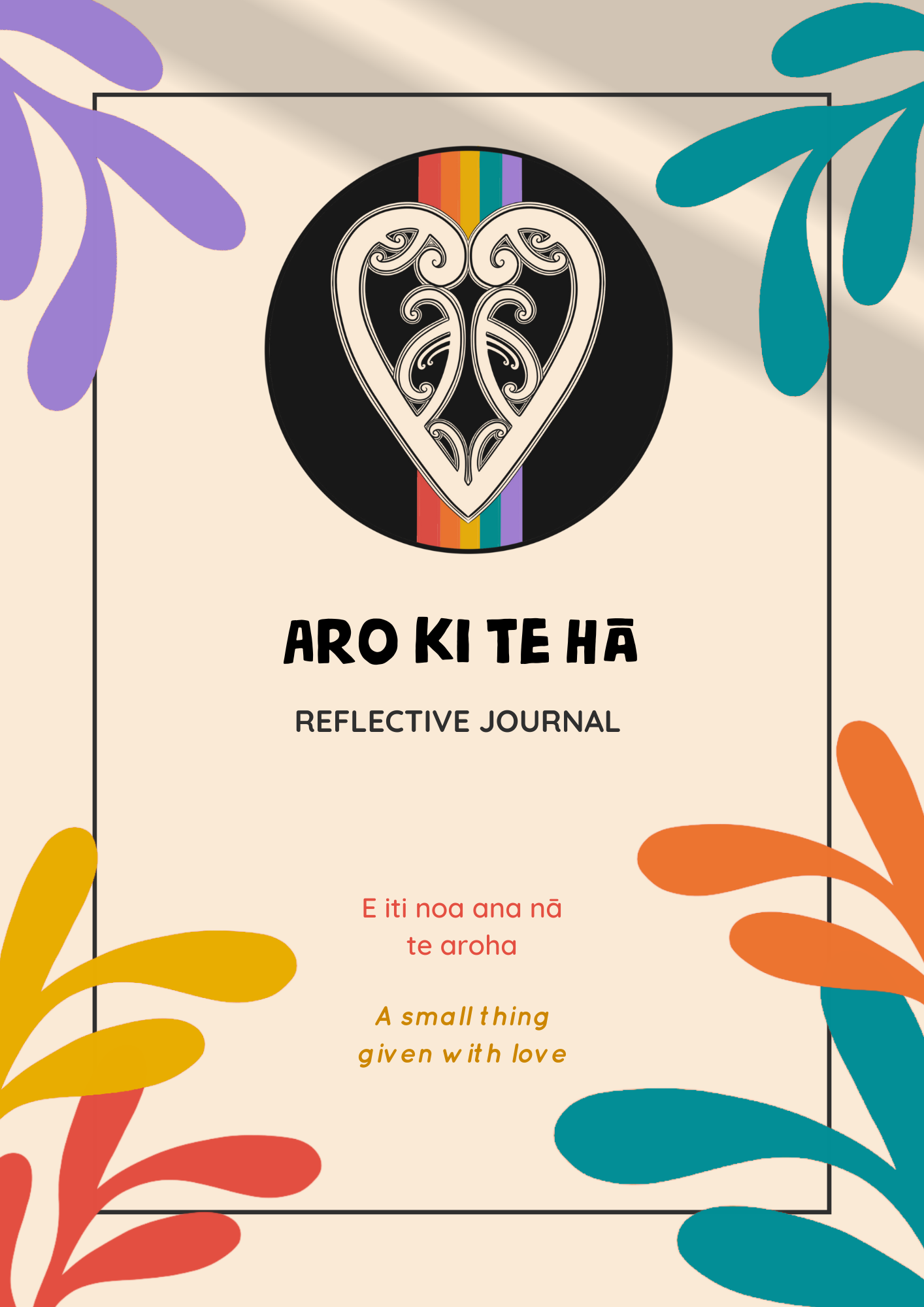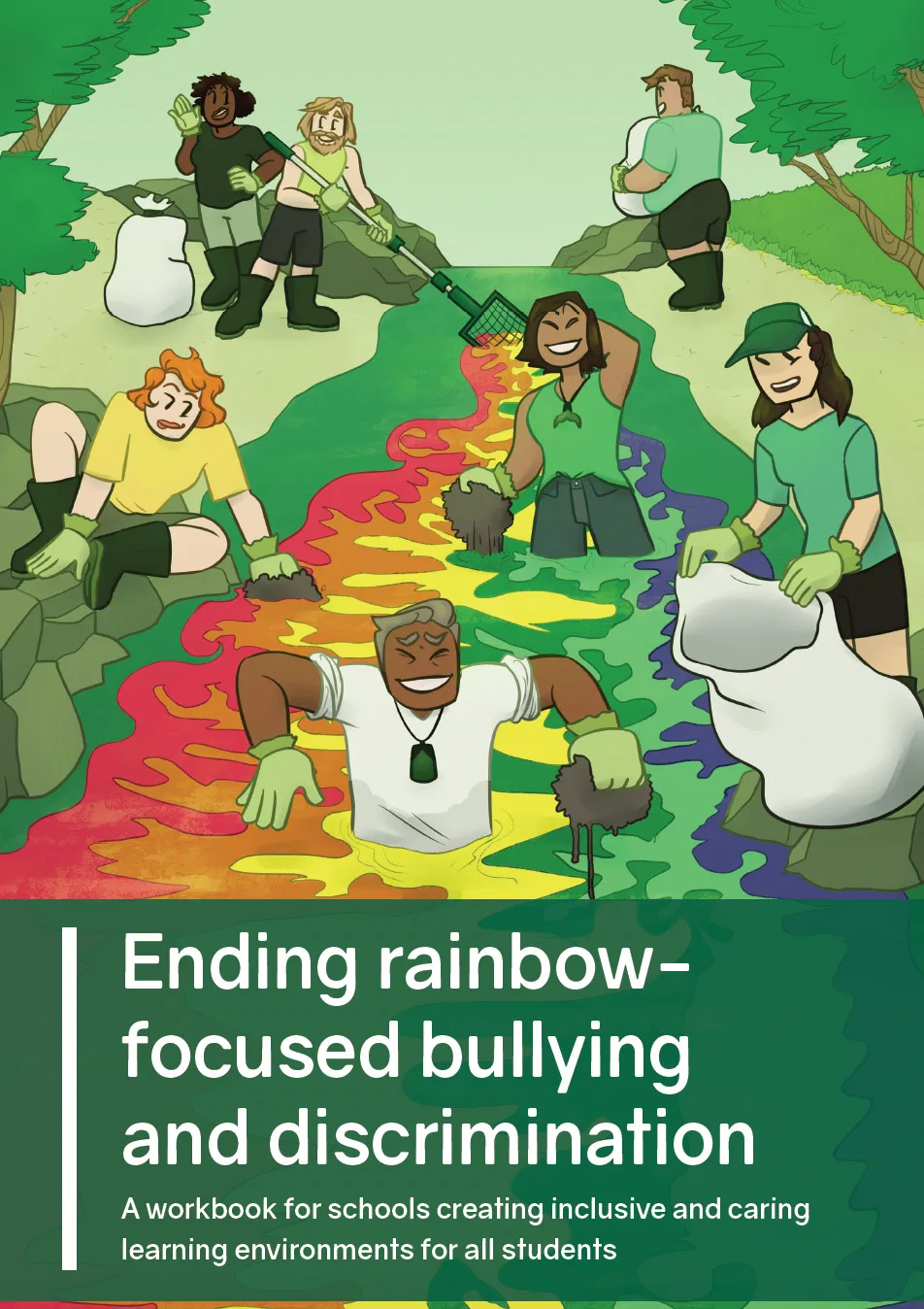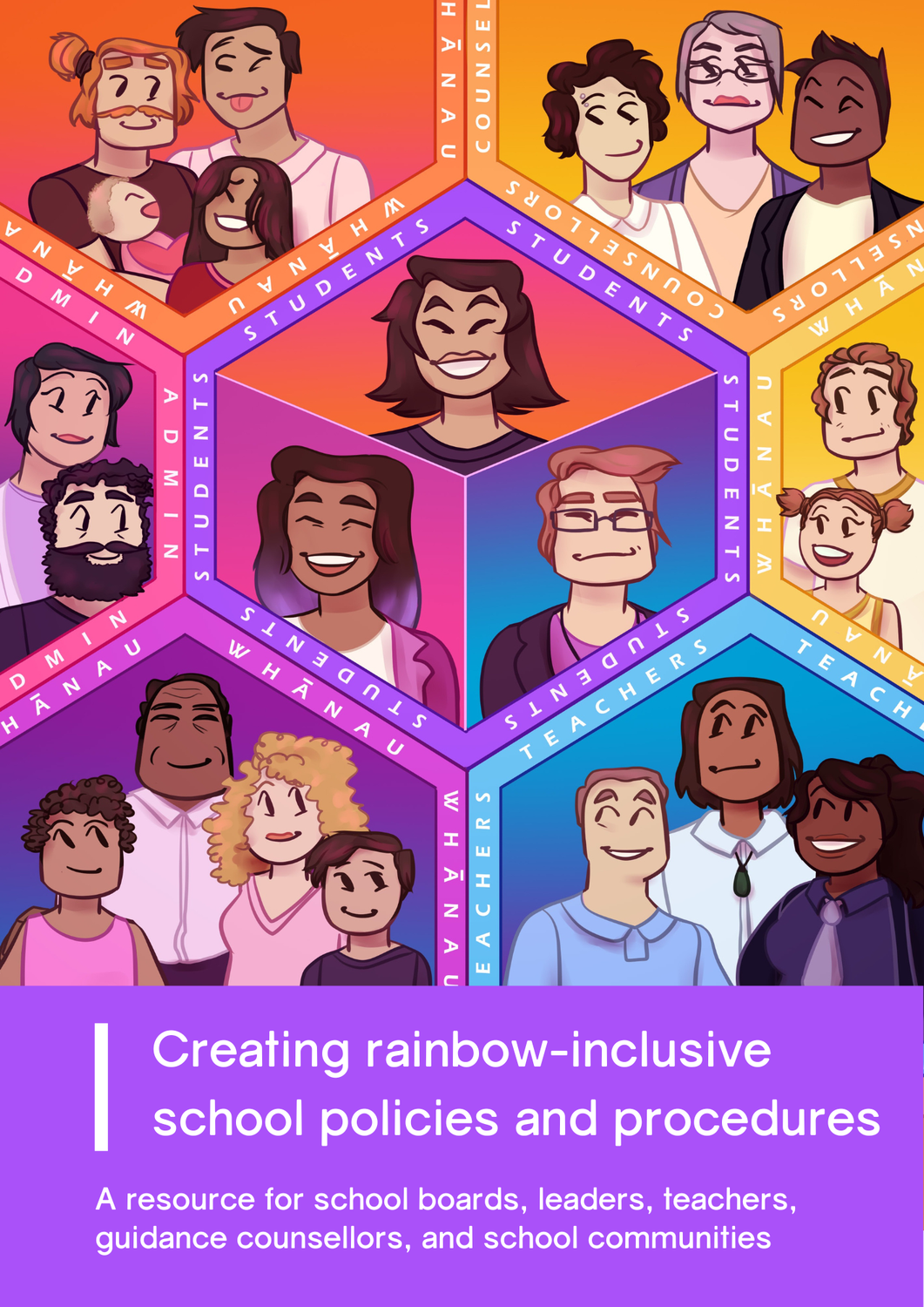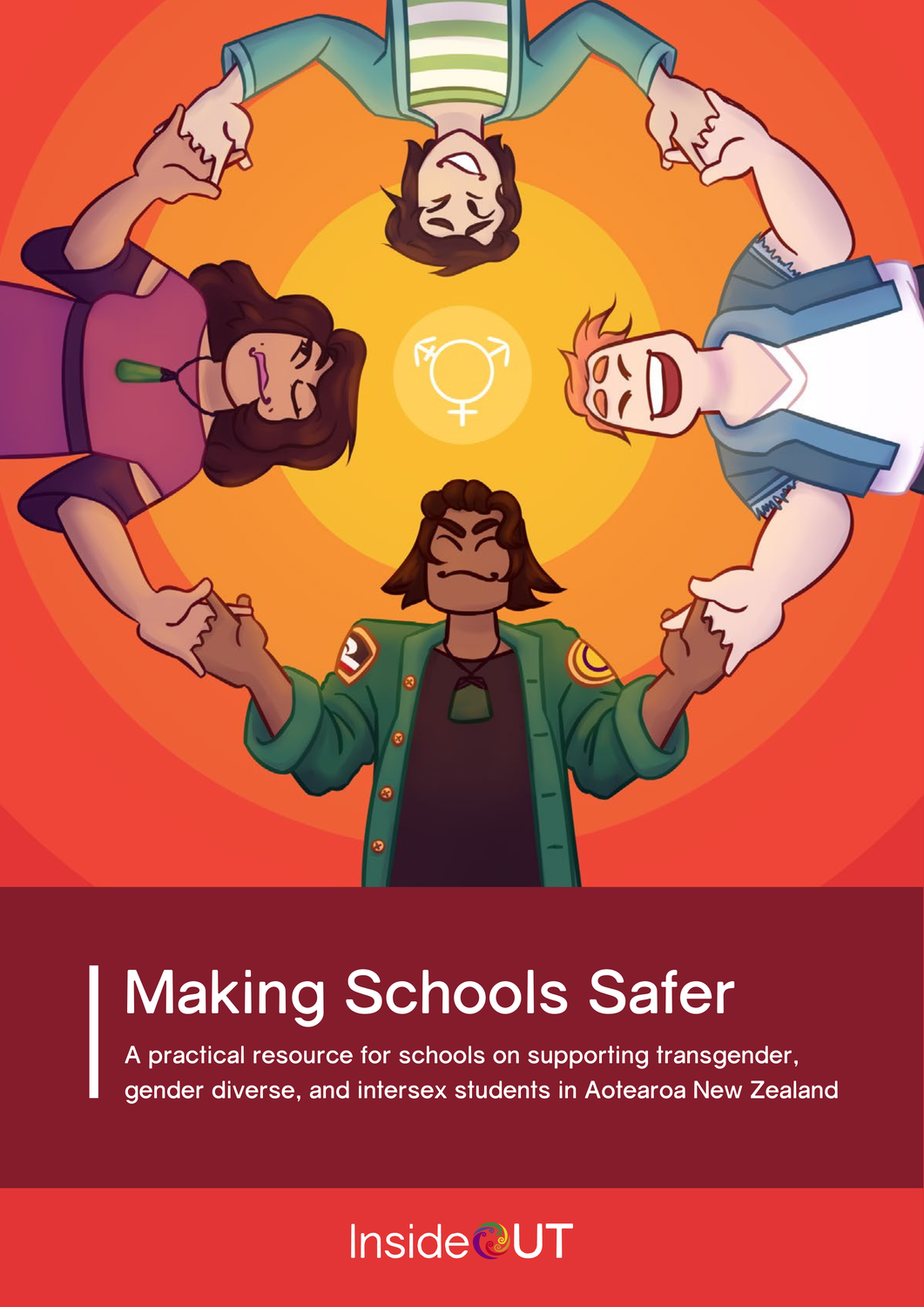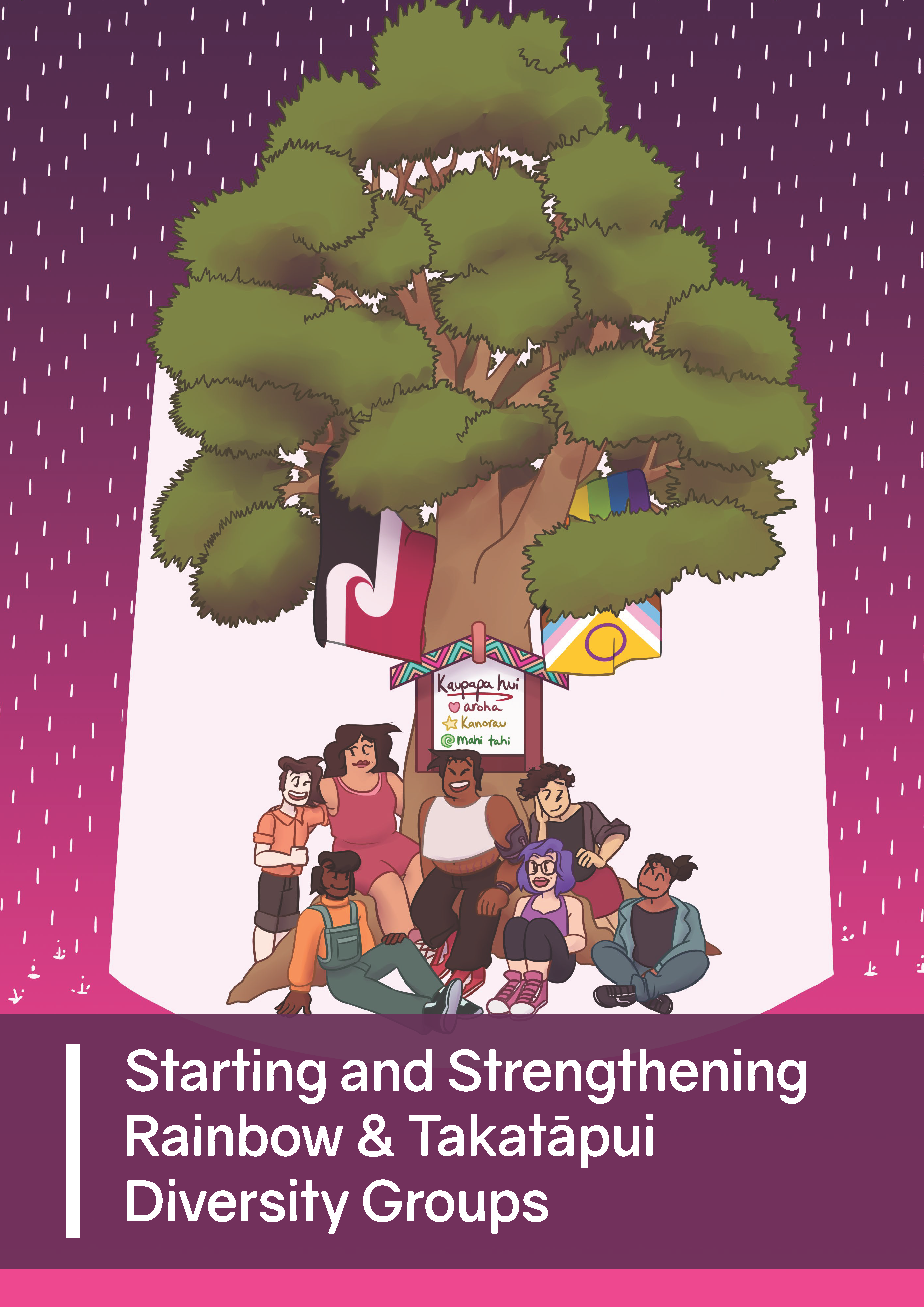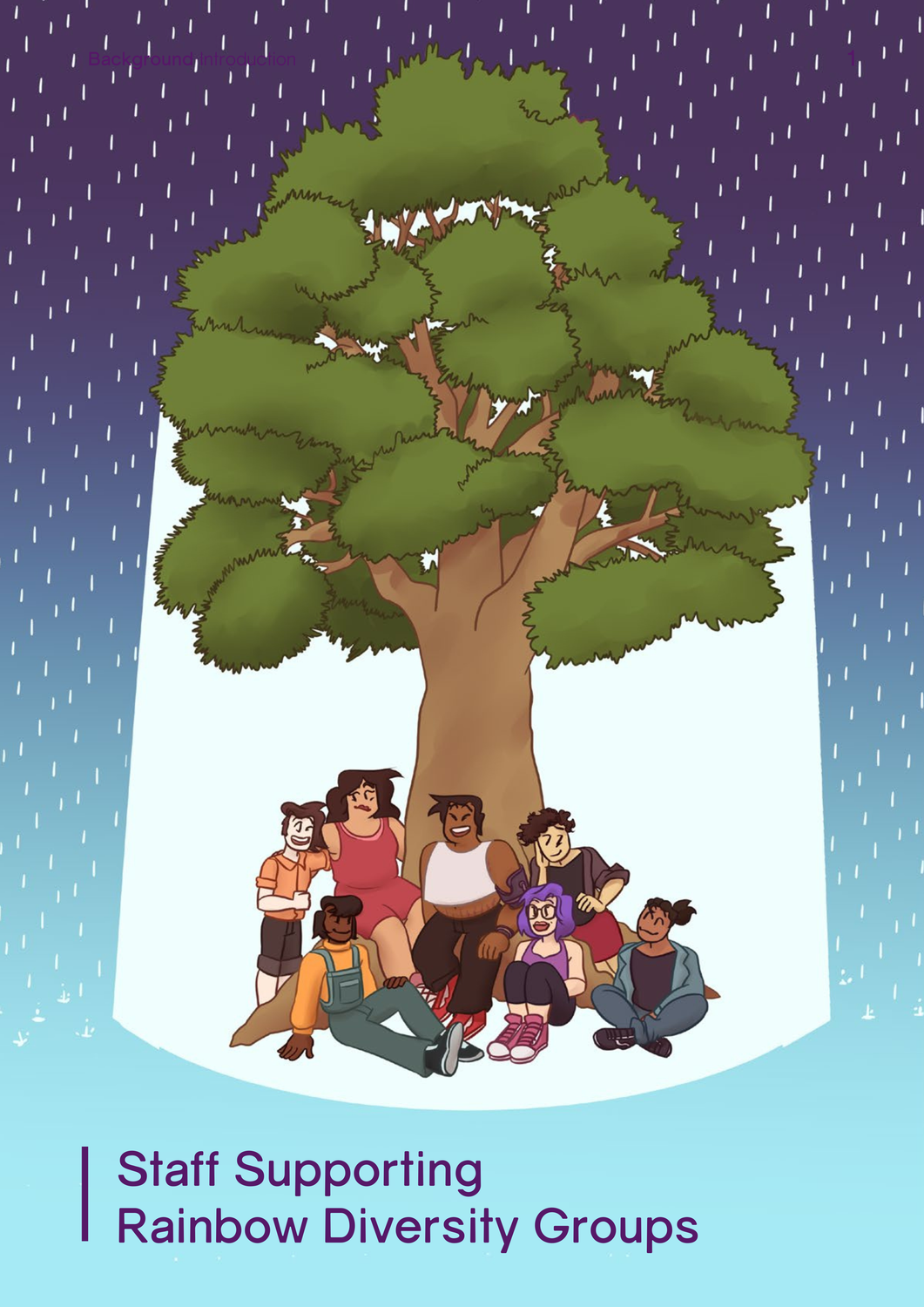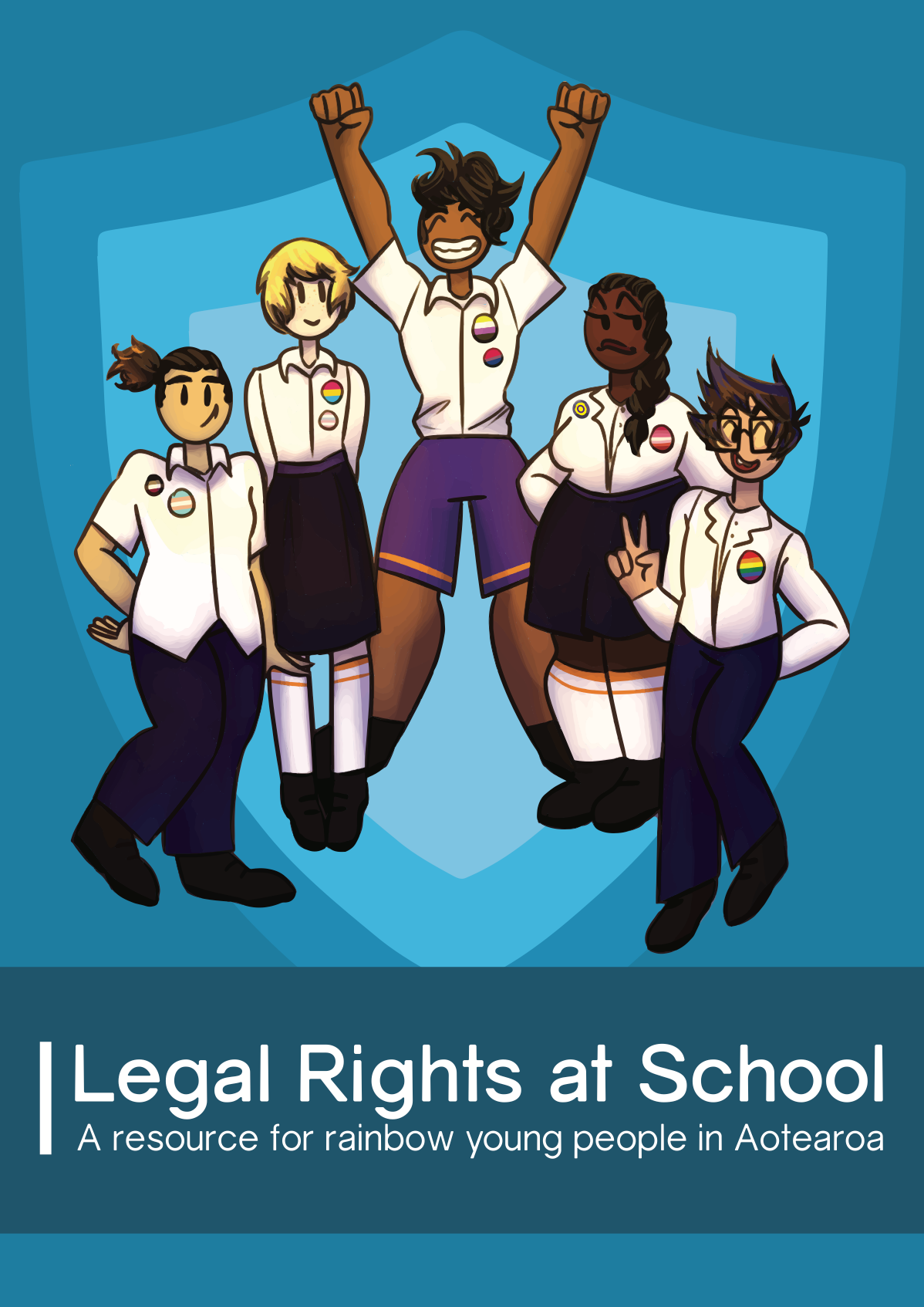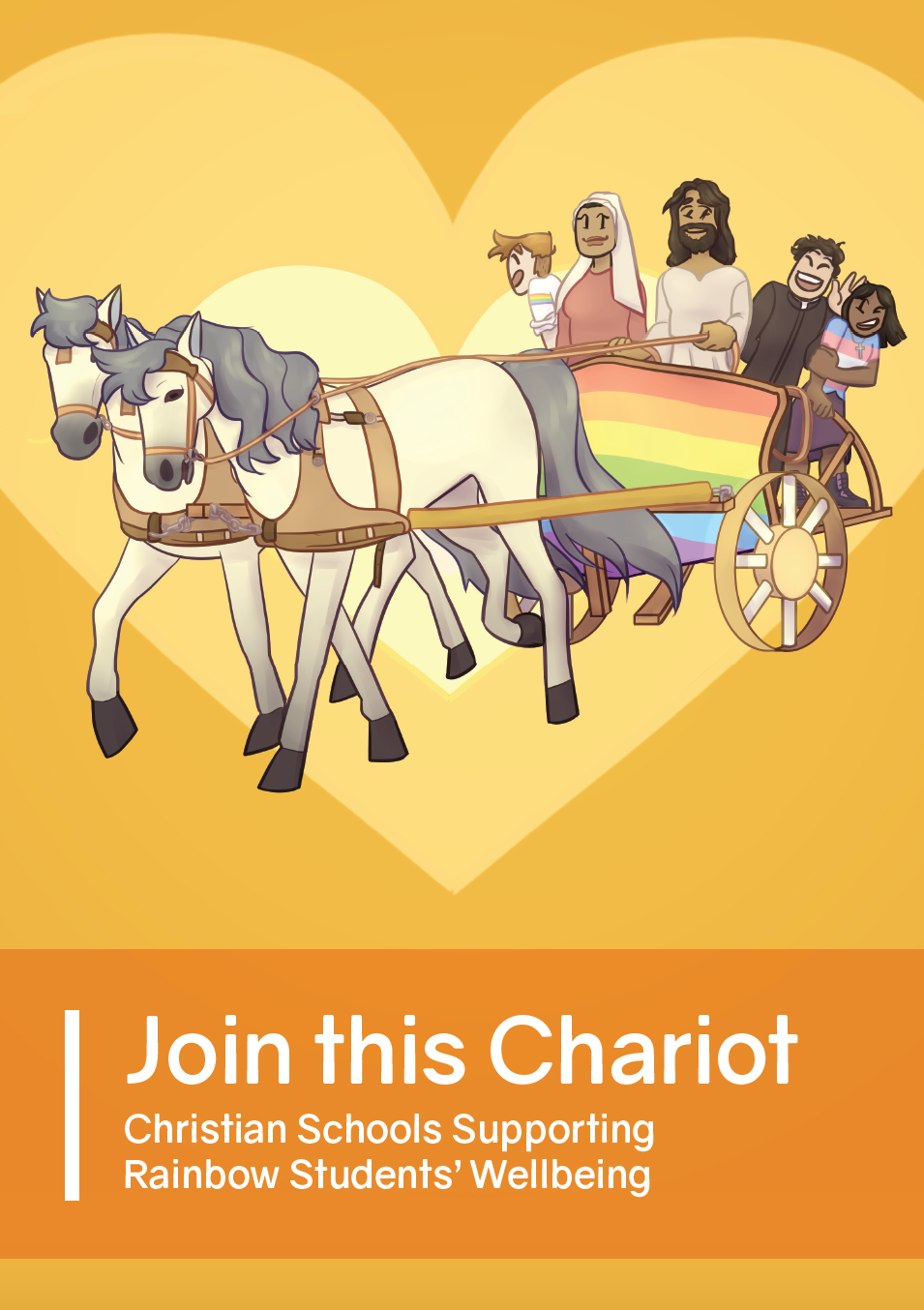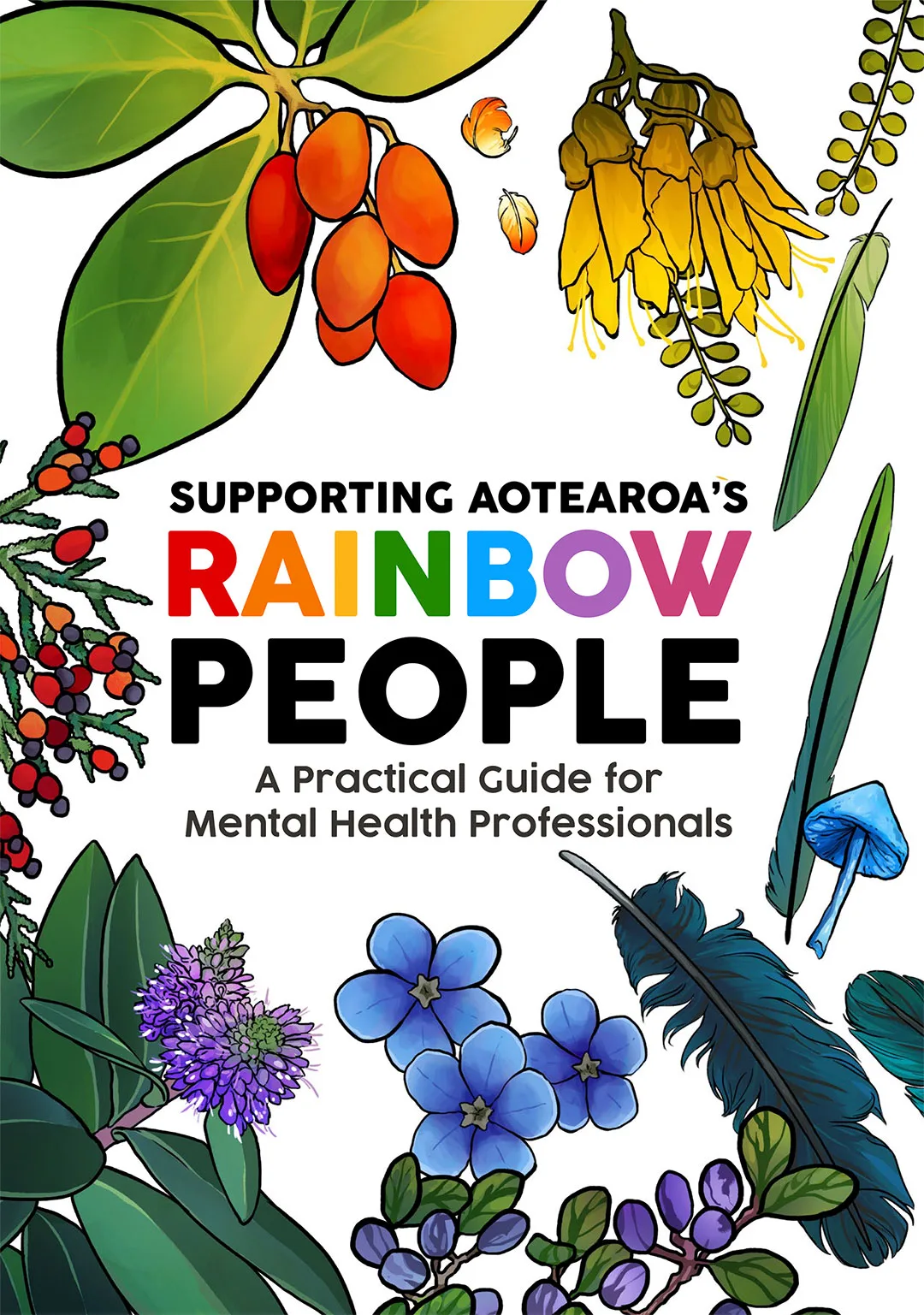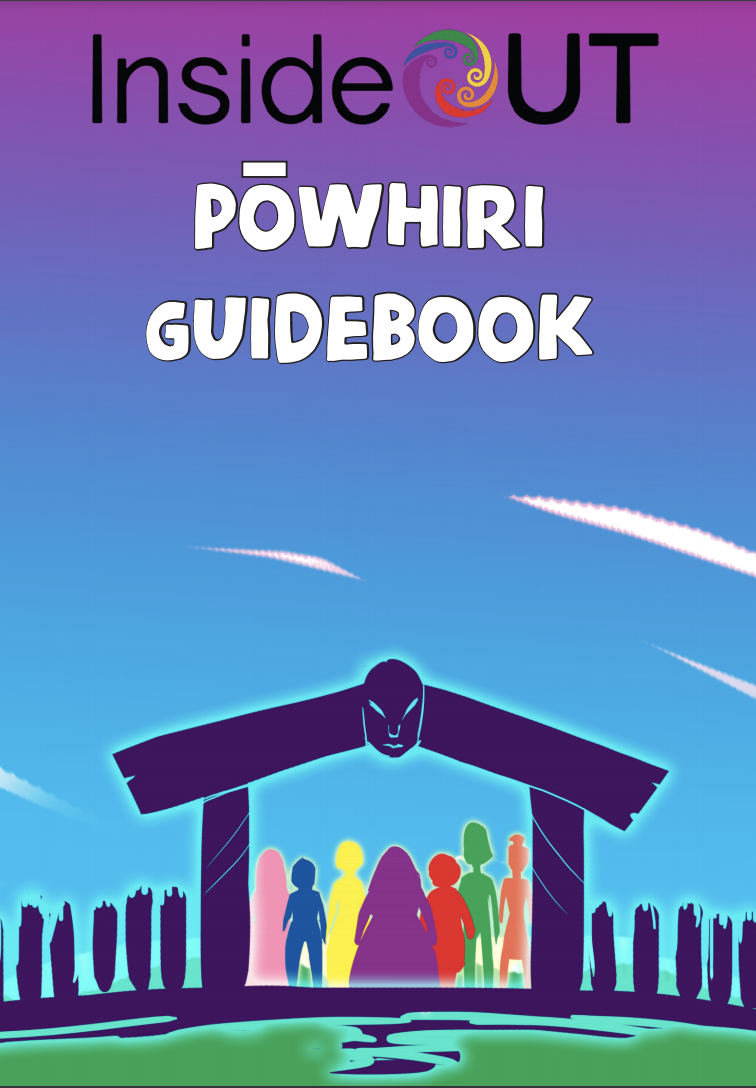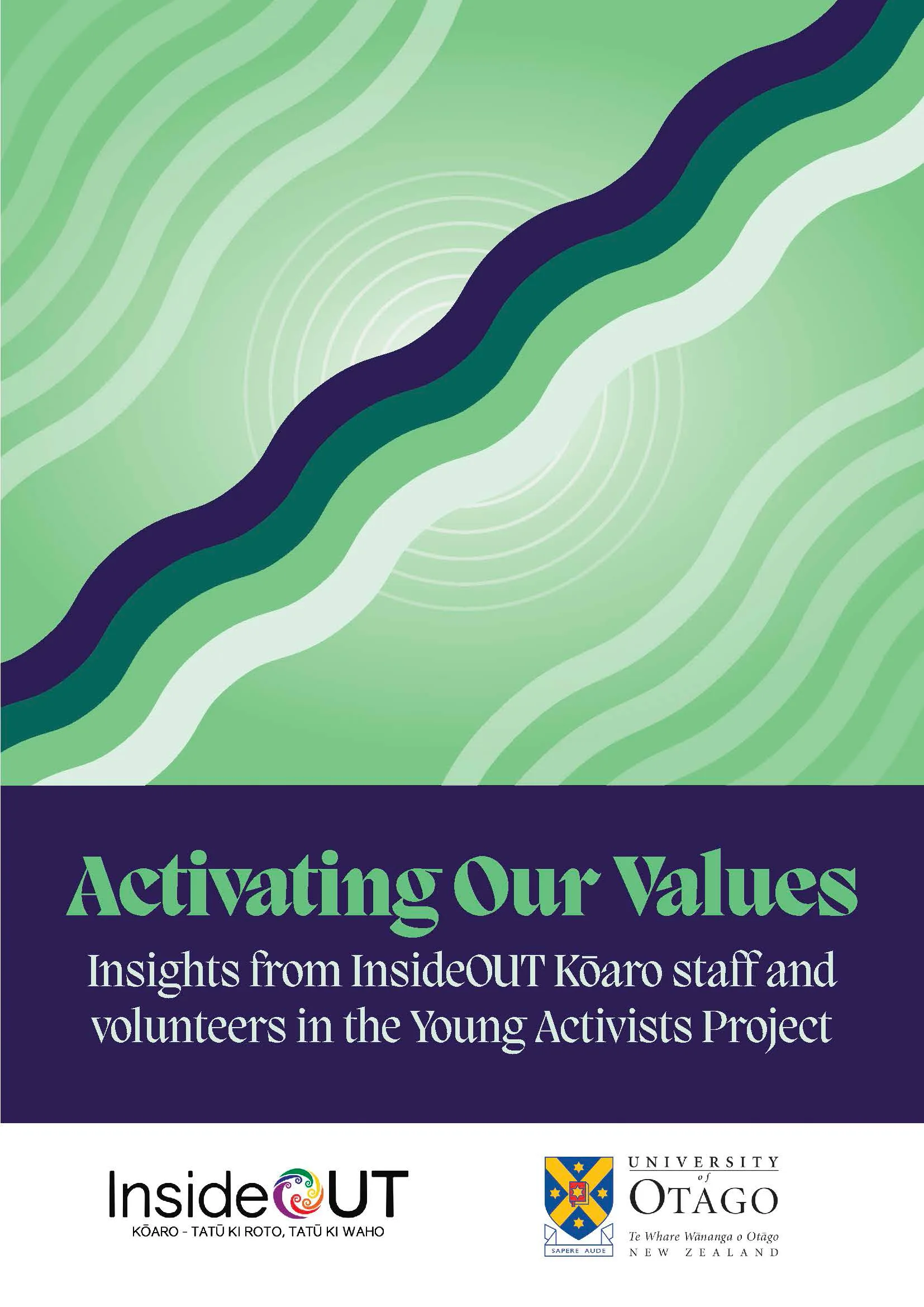Written Resources
Aro ki te Hā Reflective Journal
Audience: Youth & Whānau
Taken from our youth programme of the same name, our interactive Aro ki te Hā journal resource gives young people the opportunity to explore their ideas around respectful relationships. Since the introduction of the programme in early 2023, Aro ki te Hā has helped rainbow rangatahi to learn ways of being in safe and respectful relationships with themselves and others.
This resource is broken down into six key sections covering the topics of connection, consent, communication, conflict and community care, with information and ideas to read, as well as lots of exercises to get young people thinking about each idea and how it relates to them. The resource can be used independent from taking part in an Aro ki te Hā course, and all participants in a course will also receive one. While designed with rainbow young people in mind, people of all ages and backgrounds are welcome to utilise this resource.
Ending Rainbow-Focused Bullying and Discrimination
Audience: Primary, Intermediate and Secondary Schools
This interactive workbook was created with the support of the Ministry of Education to help schools address and prevent the different types of bullying that takatāpui and rainbow young people across Aotearoa New Zealand have told us they experience. Building on existing frameworks such as Bullying Free New Zealand’s roadmap, this workbook aims to build confidence in identifying rainbow-focused bullying and its impacts, creating rainbow-inclusive learning environments to counter bullying, and building strategies within bullying prevention plans and policies to ensure rainbow students are acknowledged and cared for. The information in this resource is relevant to all primary, intermediate and secondary schools in Aotearoa.
Creating Rainbow-Inclusive School Policies and Procedures
Audience: Schools
This resource can be used by school boards, school leaders, and staff members to identify both strengths in existing policy frameworks, and areas where processes and guidelines can be updated or added. It can also be used to provide starting points or ideas for further discussion. Schools are encouraged to adapt the information to align with their kaupapa, values, and commitments.
Making Schools Safer
Audience: Youth & Whānau, Schools
This resource provides information and guidance for schools to create safer and more inclusive environments for their trans, gender diverse and intersex students.
Additional online resources to Making Schools Safer are available to download here:
Starting and Strengthening Rainbow Diversity Groups
Audience: Schools, Youth
This resource is aimed at students who have or would like to start a rainbow diversity group or queer straight alliance in their school.
The resource contains information such as how to start a group, what to do in your group, facilitation tips, information for staff, examples of other groups and lots more.
Massey University supported the redesign of this resource, taking a research-based approach to keeping the resource inclusive of rainbow and takatāpui communities in New Zealand. This new edition will cover groups based in tertiary education environments as well as schools, thanks to input from universities across Aotearoa.
Available to download
Staff Supporting Rainbow Diversity Groups
Audience: Schools
This resource aims to support teachers, guidance counsellors, and other school staff who support rainbow diversity groups/QSAs in their school. The resource covers background information about rainbow communities in Aotearoa, the role of staff supporting a QSA, information about advocating for the group, safety and culture, and working within your school’s culture.
Available to download
Legal Rights at School
Audience: Youth & Whānau, Schools
Rainbow young people often experience discrimination at school, which can take many different forms. This resource aims to give you an overview of your legal rights at school, covering both issues that might affect an individual, and a queer straight alliance/rainbow diversity group.
Available to download
Join this Chariot
Audience: Schools, Churches, Christian organisations
This resource aims to support Christian faith-based schools to be welcoming and safe places for rainbow rangatahi. We also hope this resource will be useful for mainstream schools in communities where a significant proportion of the community holds Christian beliefs.
Available to download
Supporting Aotearoa’s Rainbow People – A Mental Health Guide
Audience: Schools, Mental Health Professionals
Rainbow people in New Zealand face a range of complex issues, and mental health professionals don’t always receive specific training about their needs and experiences.
This guide is for anyone who provides mental health support in Aotearoa, including (but not limited to) counsellors, psychologists, psychiatrists, psychotherapists, tohunga (Māori healers), social workers, mental health nurses, and GPs. It will also be helpful for youth workers, group facilitators, and peer supporters.
Pōwhiri Guidebook
Audience: Youth & Whānau
InsideOUT’s Pōwhiri Guide Book was created as an inclusive resource to support young people to understand what a pōwhiri is, and how a pōwhiri can be inclusive of takatāpui, whakawhahine, tangata ira tane and trans and gender diverse people given that gender roles are involved.
The resource is free to be shared and used as it is, however we recommend always checking in with tangata whenua at the marae you are visiting around their inclusion/knowledge around gender diversity. Each marae may have different understandings, and it is best to have a conversation about this early on. You are welcome to use this resource as a tool to support these conversations, and we also recommend the resources at takatapui.nz.
Available to download
Activating Our ValuesInsights from our staff and volunteers in the Young Activists Project
InsideOUT Kōaro was one of six youth-led groups and campaigns to take part in the Young Activists project, led by a team of researchers from the University of Otago between 2018 and 2022.
As part of this project, InsideOUT Kōaro and the research team collaboratively developed Activating Our Values, a resource that provides a snapshot of the key values InsideOUT Kōaro staff and volunteers identified throughout the project’s interviews.
Some of the main values that interview participants talked about include fostering community, flexibility, reciprocity, and centring self-determination.
This resource was written to encourage other volunteer-led or non-profit organisations in Aotearoa and beyond to document and share how they enact, activate and communicate their values.
Available to download
Rainbow Terminology
Audience: Schools, Workplaces, Youth & Whānau
A list of terms related to sex, gender and sexuality, and their common definitions.
Available to download.
Rainbow Resources for Schools
Audience: Schools
This list contains resources to help you support rainbow ākonga and their whānau at school.
Available to download.
Inclusive Curriculum Ideas
Audience: Schools
These ideas are designed to help your school integrate rainbow-inclusive content into your curriculum at all year levels. They are organised by the seven key learning areas in The New Zealand Curriculum, but can be implemented across areas. Some of these ideas have been adapted from those outlined in the Ministry of Education’s Relationships and Sexuality Education Guidelines.
Available to download.
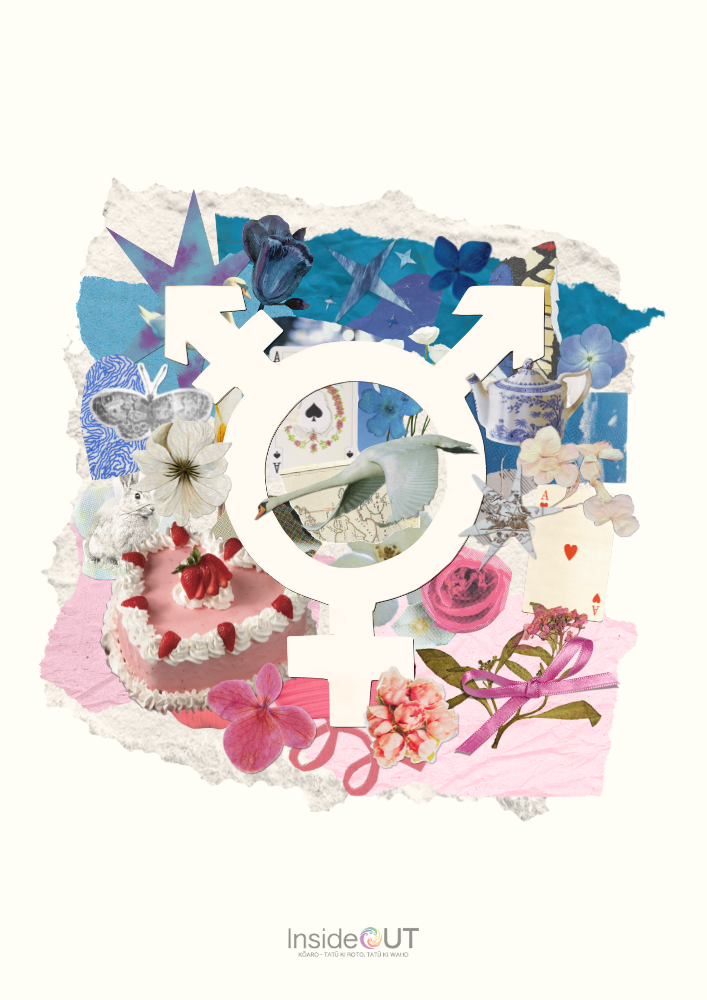
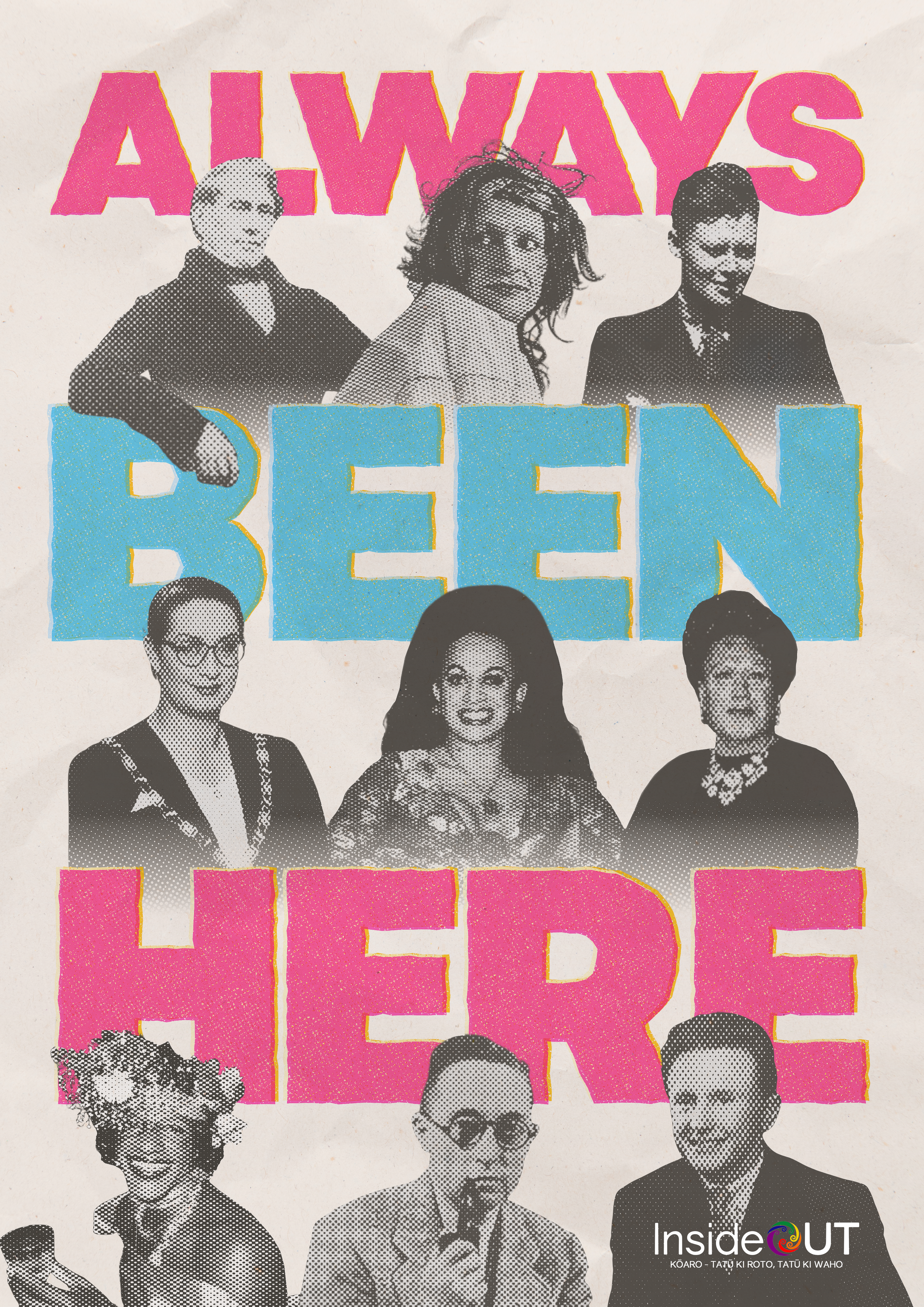
Posters
A collection of rainbow posters from InsideOUT Kōaro and other rainbow organisations across Aotearoa that can be downloaded and printed for use in schools and classrooms.
Video Resources
Rainbow Tamariki and Whānau at intermediate schools in Aotearoa
Inside Out is a national charity, and our vision is to support all rainbow young people across Aotearoa to have a sense of safety and belonging in their schools and communities.
We provide a range of support to schools, workplaces and community organisations to create more rainbow inclusive spaces.
We also run a range of youth development programs in Wellington to support young people to connect with others like them.
Rainbow young people in New Zealand are five times more likely to attempt suicide because of the discrimination that they’re facing.
Inside OUT believes that every young person has the right to be safe and free to be who they are.
Rainbow Tamariki and Whānau at intermediate schools in Aotearoa
Audience: Youth & Whānau, Schools
Listen to the voices of rainbow tamariki and whānau at primary and intermediate schools in Aotearoa.
Available to watch online.
Rainbow rangatahi
at secondary schools in Aotearoa
Inside Out is a national charity, and our vision is to support all rainbow young people across Aotearoa to have a sense of safety and belonging in their schools and communities.
We provide a range of support to schools, workplaces and community organisations to create more rainbow inclusive spaces.
We also run a range of youth development programs in Wellington to support young people to connect with others like them.
Rainbow young people in New Zealand are five times more likely to attempt suicide because of the discrimination that they’re facing.
Inside OUT believes that every young person has the right to be safe and free to be who they are.
Rainbow rangatahi at secondary schools in Aotearoa
Audience: Youth & Whānau, Schools
Listen to the voices of rainbow rangatahi at secondary schools in Aotearoa.
Available to watch online.
Te Ao TakatāpuiTrailer
Takatāpui is an all-encompassing word that includes people who grew up Māori and identify as part of the rainbow community, gender diverse community.
Being takatāpui is not brand-new in Te Ao Māori. People have been that way for, you know, generations. But in the social context of today, it's our umbrella term for people who whakapapa Māori who are also a part of the community.
Te Ao Takatāpui
Audience: Youth & Whānau, Schools
Te Ao Takatāpui is a video documentary series from InsideOUT Kōaro celebrating and sharing the stories and perspectives of takatāpui community members.
Te Ao Takatāpui has been created as a free resource to be used in a range of ways. This could include holding a screening event for your community, using the videos in sexuality and gender diversity training, using them in classrooms, using them in queer straight alliance/rainbow diversity group meetings, sharing on social media and much more!
Available to watch on our YouTube channel.
Rainbow Pasifika - More Than Four
We were all recognized as unique members of society, akava-ine, takatāpui, fakaleti, fa'afafine. And then colonisation came along and took that part of our history away from us.
Now, some of our elders are almost quite hesitant, but they're only thinking like that because of colonisation.
The reason why I love being a fa'afafine is it expresses my cultural identity because I can trace back in the history that date back way before the missionary and Colonial rulers appeared on the Island.
What I love about being brown, queer: I enjoy so much of just the exposure of, like, putting myself out on stage, I'm a performing artist, but I do things to the extent of representing who I am 100%.
Yeah, I think the thing about being diverse in sexuality and in ethnicity is that it comes with different obstacles you have to pass. In real conservative Pacific Islander families, they're not so open to it. You know, it's not something that's talked about so often, and often it is actually frowned upon. It's a difficult situation to be in.
Being Samoan and bisexual means everything. It's not been easy, but it's just that I'm glad I've come out.
In Samoa, we, you don't hear of the terms "transgender" or "gay". Samoan people in Samoa classify us as fa'afafine and they call us fa'afafine.
Being Pasifika and queer, there's always this moment where I believe that there are some penalties to it. It's also a gift.
I can be this glamorous brown-skinned diva who owns the stage for the amount of time she has, or I can be this dancer who just moves her body the way she feels because it's obviously embedded into me.
Being Samoan and bisexual – it's true there's no terminology for that. Just 'cause there's no terminology for that in Samoan culture doesn't mean that it doesn't exist, because we are out there.
What being akava'ine means to me is several things. The first one is who I am culturally, because first and foremost, I take my culture with me everywhere I go.
Secondly, it's an easy way for my Pacific community. Everyone has a role. You have the man's jobs, the female's job, and then you have the job of the akava'ine.
I think some of the hard things about being fa'afafine is social acceptance. To me, the general statement that's been floating around that fa'afafine are accepted in Samoa, I believe they're actually tolerated.
And that comes back to sort of the missionary and colonial rulers and how they have filtered Samoan people in Samoa.
It's weird too because Samoan's always have this thing of embracing the fa'afafine, but there has to be this one particular type of fa'afafine which is the who'll stay at home, cleans stuff, do all the chores, looks after the kids, like, just this domesticated fa'afa and not this kind of fa'afafine that's free and… they're finding themselves and quite expressive with their wardrobe. That's probably the hard thing.
Some of the hard things about being Samoan and bisexual: I would say our religious part and what I feel I've put my family through. It's taken me a while to come out. I didn't want my family to get any backlash.
Our family's quite religious; they're really into their Christianity in Samoan culture. I just didn't want anything bad to happen to them.
What I would say to the younger people is that there is help out there and there's other people, all you've got to do is just reach out and not be afraid because it may seem crazy at the time but you got people that are there for you regardless.
My education counts as any criticism to being fa'afafine. You must be educated – it is our weapon.
I've been there and it's going to be a hard journey, but I kid you not, at the end, you will be one hell of an amazing person, and you will walk down the middle of that road strutting your stuff and owning it.
More Than Four
Audience: Youth & Whānau, Schools
More Than Four is a video resource from InsideOUT, exploring the identities and experiences of and beyond ‘LGBT’ identities. We interviewed over 30 members of the rainbow community to create a series of short videos speaking explore the experiences of people who are asexual, aromantic, intersex, non-binary, bisexual, pansexual, transgender, takatāpui, fa’afafine, akava’ine, queer parents and people who identify as both Māori, Pasifika or Asian and queer.
More Than Four has been created as a free resource to be used in a range of ways. This could include holding a screening event for your community, using the videos in sexuality and gender diversity training, using them in classrooms, using them in queer straight alliance/rainbow diversity group meetings, sharing on social media and much more!
Available to watch on our YouTube channel

